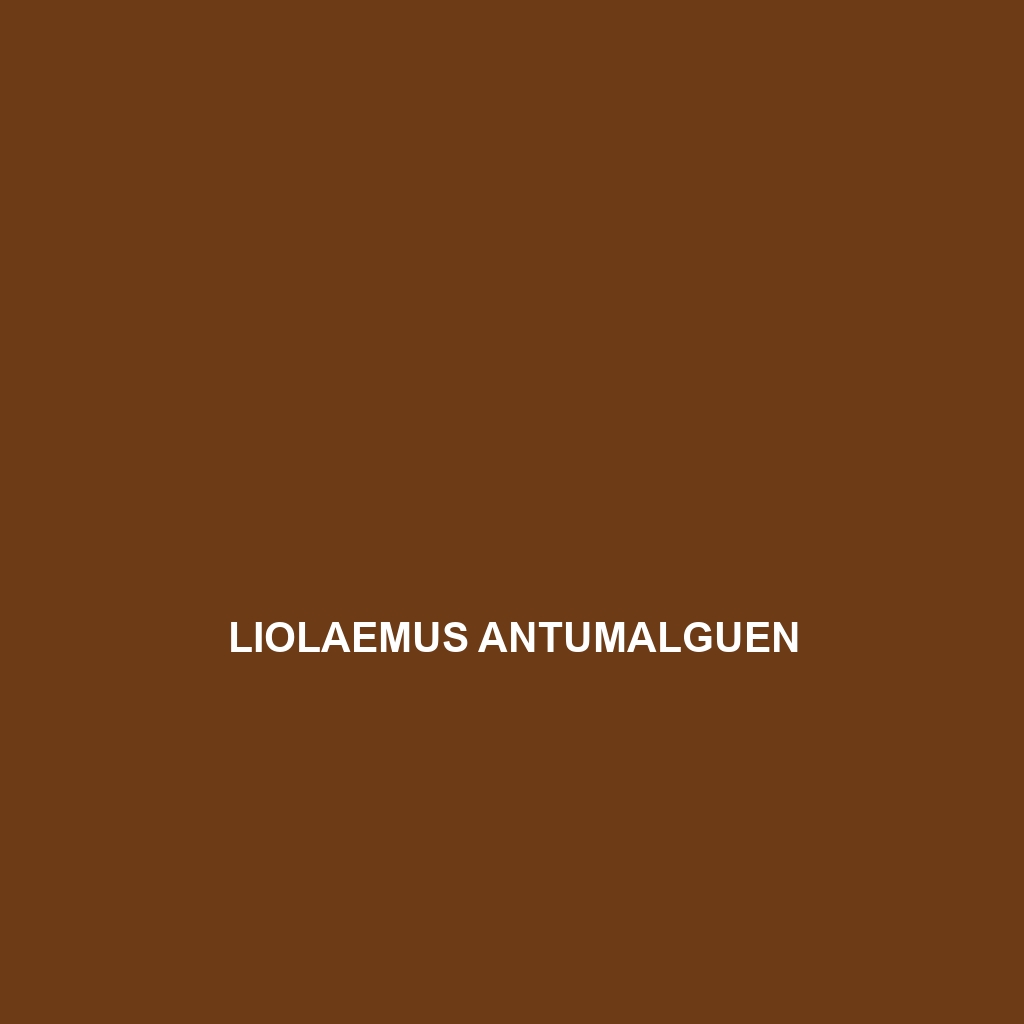Discover the vibrant Liolaemus pictus, a diurnal lizard native to the temperate forests and savannas of Argentina and Chile. This insectivorous species features a slender body measuring 10 to 15 cm, adorned with brown, green, and tan hues that provide excellent camouflage in its natural habitat.
Tag: Argentina wildlife
Liolaemus parthenos
<p><b>Liolaemus parthenos</b>, commonly known as parthenos, is an agile, diurnal lizard found in the temperate forests and montane regions of South America, particularly Argentina and Chile. With a slender body, earthy-toned coloration, and a diet primarily consisting of insects, this species plays a vital role in its ecosystem while exhibiting fascinating behavioral traits and reproductive cycles.</p>
Liolaemus lentus
<li><b>Liolaemus lentus</b> is a medium-sized lizard native to the temperate forests and rocky areas of the Andean region in Chile and Argentina, known for its striking earthy coloration and distinctive dorsal patterns. This insectivorous species exhibits diurnal behavior, engaging in territorial displays during the mating season, and plays a crucial role in its ecosystem by regulating insect populations while serving as prey for various predators.</li>
Liolaemus isabelae
<p><b>Liolaemus isabelae</b>, native to Patagonia, Argentina, is a striking lizard species measuring 13 to 17 cm with a vibrant mix of green, brown, and gray coloration, well-adapted to its diverse habitats. An insectivore with captivating social behavior, this species contributes significantly to the ecosystem by maintaining insect populations and serving as prey for larger predators.</p>
Liolaemus gununakuna
Discover the Liolaemus gununakuna, commonly known as the Gununakuna lizard, a vibrant insectivore native to the temperate forests, savannas, and rocky outcrops of Chile and Argentina, noted for its striking colors and adaptability in diverse habitats. With a length of 15 to 20 centimeters, this lizard plays a crucial role in controlling insect populations while serving as prey for larger predators, emphasizing the importance of its conservation.
Liolaemus azarai
<b>Liolaemus azarai</b> is a resilient lizard species found in Argentina’s Andean foothills and Patagonia, characterized by their slender bodies measuring 8 to 10 centimeters, earthy color variations, and primarily insectivorous diet. This adaptable species plays a crucial role in maintaining ecological balance and has a conservation status of Least Concern.
Liolaemus archeforus
Discover the fascinating Liolaemus archeforus, a vibrant lizard native to the temperate forests and high-altitude regions of the Andes Mountains, known for its striking coloration, agile movement, and essential role in controlling insect populations while serving as prey for larger predators. This species thrives in rocky terrains and exhibits unique behaviors, including color change for camouflage and social interactions during mating seasons.
Liolaemus antumalguen
Introducing the Antumalguen lizard (Liolaemus antumalguen), a medium-sized, diurnal reptile found in the temperate forests of southwestern Argentina. With its vibrant coloration and adaptability, this fascinating lizard plays a crucial role in its ecosystem as both a predator of insects and a vital food source for larger animals.
Liolaemus annectens
<p>The <b>Liolaemus annectens</b>, or anointed iguana, is a visually striking lizard found in temperate forests and arid savannas of Chile and Argentina, known for its camouflage, diurnal behavior, and diverse omnivorous diet. With robust bodies averaging 15 to 25 cm and bright dorsal scales that aid in thermoregulation, this species plays a crucial role in its ecosystem by controlling insect populations and promoting plant diversity.</p>
Diplolaemus sexcinctus
Diplolaemus sexcinctus, or six-lined skink, a vibrant, diurnal lizard native to South America's temperate forests, known for its distinctive six stripes and ability to regenerate its tail. This agile insectivore plays a crucial role in controlling insect populations while providing a vital link in the ecosystem's food web.









